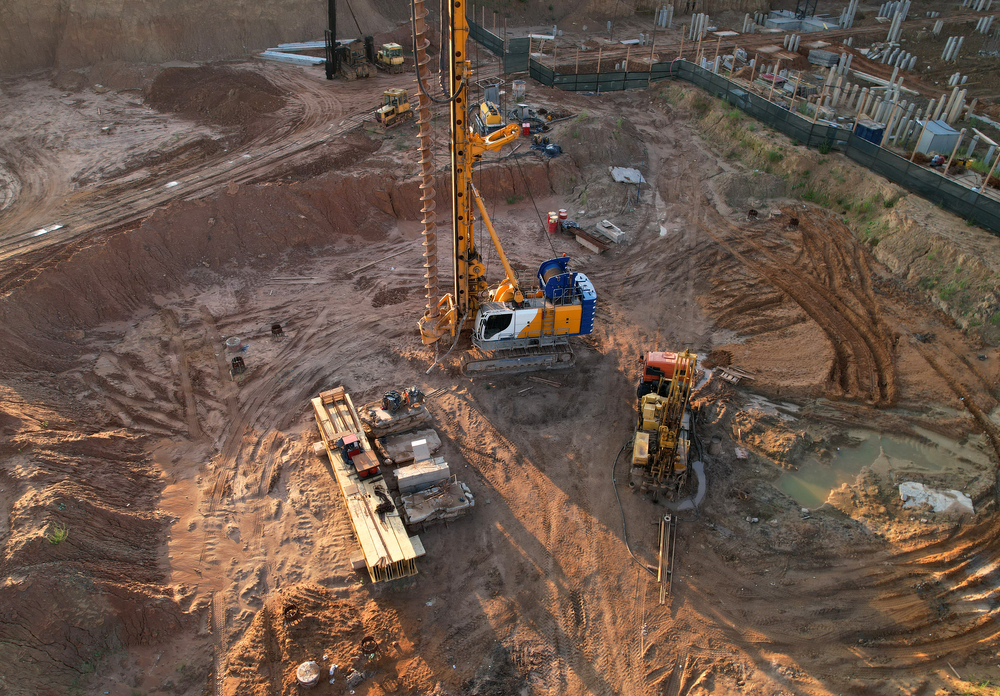7 Simple Techniques For Geotheta
Table of ContentsGeotheta Fundamentals Explained5 Easy Facts About Geotheta ShownNot known Details About Geotheta Some Of Geotheta
They team up with civil engineers, structural engineers, engineers, and other specialists to incorporate geotechnical factors to consider right into the general task style and building procedure. This calls for reliable synergy, sychronisation, and interaction to ensure that the geotechnical aspects line up with the project purposes and satisfy regulatory demands.Mining & Products Engineering: Concepts of drilling, penetration prices, and factors impacting the choice of exploration approach. Features of explosives, firing systems and blast patterns. Blowing up methods in surface and underground operations. Unique blasting methods at excavation borders. Vibration and noise control. Mechanical and constant methods to fragmentation, consisting of longwall shearing and fullface boring.
Modelling of piece and particle dimension distributions; comminution as a transfer function. Comminution modern technology: squashing, grinding, dimension classification. Integrated evaluation of fragmentation and comminution procedures. Supplied by: Mining & Materials Engineering.
Not known Facts About Geotheta
Bachelor's level programs in civil, geotechnical, geological, and environmental engineering normally last 4 years and consist of basic education and learning courses in English, social science, and the liberal arts, in addition to training courses in sophisticated maths, architectural geology, and fluid mineralogy. (https://moz.com/community/q/user/geotheta?_gl=1*xkyvtd*_up*MQ..*_ga*NjU0Mjk2NzIxLjE3MjI2MDU1Nzc.*_ga_DS7K9Q3S5W*MTcyMjYwNTU3Ni4xLjAuMTcyMjYwNTU3Ni4wLjAuMA..)
Geotechnical design entails the assessment of the soil and rock problems at a particular site, and their ramifications for the growth of that site. As the majority of structures depend on the ground for assistance, it lacks shock that a detailed understanding of the ground problems, and the viability of structure systems, are important to the long-lasting security and efficiency of the structure or framework.
Specialising in the examination of geological developments and ground behaviour, geotechnical designers carry out scientific examinations and screening to comprehend the impact these geological formations may carry the layout and construction of structure, civil and framework tasks. This proficiency is essential for the layout and building of buildings, roads, passages, dams, bridges, and water supply and sewer system.
The geotechnical group at Douglas Allies consistently consult with architects, style designers, programmers, and builders to make suggestions on layout and development propositions to guarantee that the constructed frameworks are accordingly created for the ground problems. For instance, the layout of footing systems needs to think about the weight of the framework, the capability of the ground to support that weight along with motion tolerances and effective building.
About Geotheta
This job is significantly streamlined by the usage of our Douglas Map geospatial platform that makes this details easily obtainable in a simple to make use of internet internet browser interface. A geotechnical designer will certainly direct the boring of boreholes and examination pits to collect soil and various other examples, and additionally assess surface functions and ground exposures to develop a geotechnical model of the subsurface conditions.
Depending upon the job type and ground conditions ran into, lab screening may amongst various other things assess strength, compressibility, sensitivity and/or permeability of dirt and rock examples. Hereafter data is accumulated and collated, the results are used for a geotechnical design of the site, which is normally presented as areas across the site.

A geotechnical examination naturally can just evaluate the ground problems at the locations pierced or excavated. Natural variations in dirt and rock problems can occur throughout a site and in between examination places. It is for that reason great practice that the geotechnical designer be retained throughout building of the project to provide on-site verification that the ground problems encountered follow the expectations and advice offered in the geotechnical investigation report.
4 Easy Facts About Geotheta Shown
Geotechnical designers utilize their in-depth understanding of dirt and rock to analyze more risk and fix troubles on diverse facilities projectsGeotechnical design is a specialist branch of civil engineering which looks at the behavior of earth materials and the application of soil and rock mechanics. Consulting Engineers. As a geotechnical engineer, you will analyze the physical, mechanical and chemical residential properties of dirt and rock in order to develop foundations, retaining frameworks and earthworks
Geotechnical design is carefully linked to and overlaps with, both engineering geology and ground engineering - https://flossy-rotate-3d1.notion.site/Why-Geotechnical-Engineers-are-Vital-for-Your-Construction-Projects-7c147cf012a34d1abe5134afbabc811f?pvs=4. It's feasible to specialise in geotechnics or benefit a geotechnical firm but be called a design geologist or a ground engineer. As a geotechnical designer, you'll require to: build and preserve relationships with clients and various other professionals included in the website, throughout each projectmaintain safety and security standards on site bear in mind expense implications when you make recommendationsstudy geological maps and airborne pictures from a variety of sources and from various time periodsexamine building and construction plans to see exactly how practical they are based upon your understanding of the siteinvestigate risks or geological hazards for the sitesearch for environmentally delicate attributes, such as land fill start to develop valid and expository ground modelsplan field investigationsdrill and analyse samples of bedrock, soil, groundwater and added materials supervise other experts on sitesolve technological problems as they develop, such as unforeseen frameworks at drill sitesmonitor conditions throughout and after construction to make sure frameworks are stable in the brief and lengthy termadding data gathered on site to your first researchcreating geotechnical calculations, illustrations, and two or three-dimensional computer system designs interpreting the datamaking referrals regarding the proposed use the site
